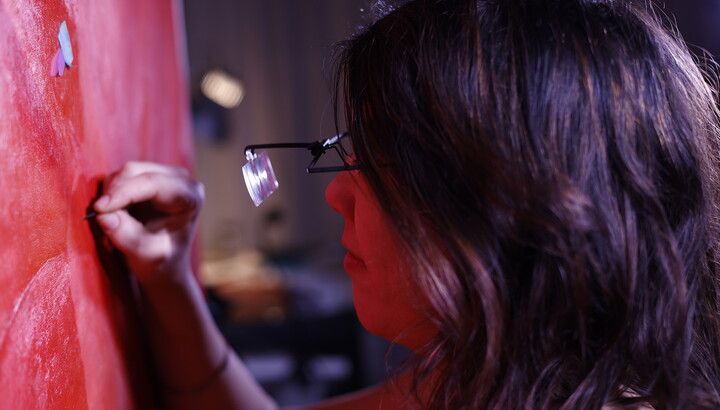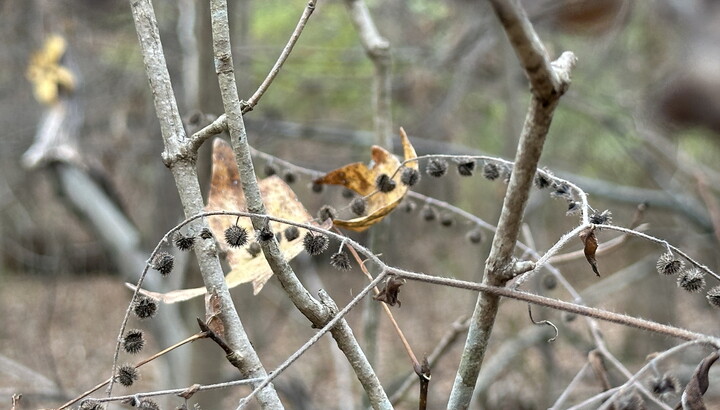The Carter Blog
Carter ARTicles
A chat with the 2022 Carter Community Artists, part 2
Mar 15, 2022
March is Women’s History Month, and in 2022, all four of our Carter Community Artists happen to be women! We were able to pull them away from their creative practices just long enough to answer a few questions about their work and practices. This is part two of a two-part blog post. Read part one here.
We’ve all been living with the COVID pandemic for about two years now. How has the pandemic influenced your art or art practice?
Calder Kamin: When everything for 2020 was canceled, it was a really hard blow. In the stillness, I still wanted to make things. I returned to clay—my BFA is in ceramics from the Kansas City Art Institute. I created things I needed for my home. I am grateful for that quiet time and that my art is back out in the world again.
Mary Nangah: While there was no direct influence on my art practice, the pandemic and quarantine of 2020 provided me with more time to build upon my current body of work. I immersed myself in my paintings and developed ideas and sketches for forthcoming paintings.
Dan Jian: I made a recommitment to drawing; I started to construct images through a tedious cutout process using only charcoal dust. I also became interested in the prospect of illustrating a mental landscape with ephemeral material such as ashes and translucent paper. In addition, I started collaborating with an artist friend in Ohio, which for the last year and a half has included a four-hour studio date each week via Zoom. The cutout drawings were made into an animation in our collaboration.
Rachel Nash: A very specific series of paintings came out of the pandemic for me. In 2020, numbers dominated our lives. How many deaths or COVID cases ruled and dictated our everyday. I made a piece of art that was bleak and dark, filled with tally marks as I processed this reality. Out of that, I was reminded of other things we count, one of them being blessings. I created a large piece where I thought of something I was grateful for each time I made a tally mark. It is called Count Your Blessings. Through the pandemic I was reminded how important gratitude is every day, especially during hardship. And now a mantra has been borne for me: Count ‘Em!
Each of this year’s Carter Community Artists has different styles and media preferences. Why have you chosen the materials you work with?
Calder Kamin: Trash! More specifically, I'm obsessed with plastic bags, marker caps, and junk mail. Nature’s endless ability to reuse and adapt motivates me to eliminate waste and reimagine it as sculpture, animations, and installations for audiences of all ages. Like the scavenger animals I sculpt, I collect a variety of plastic bags and rubbish from my environment and extended community. I see these materials as a resource for developing beautiful textures such as fox fur, celestial skies, flower petals, or even a 20-foot whale tapestry made of plastic bags.
Mary Nangah: I work with oil paint on canvas and my application of paint ranges from flat to gestural to impasto. I am naturally drawn to oil paint because of the flexibility it provides for building layers and blending. I paint with an array of materials: paint brushes, palette knives, sponges, makeup brushes, Ziploc bags, and my fingers. I gravitate toward expressive feelings of touch and textures that interplay with abstraction and figurative realism.
Dan Jian: In recent work, I am drawn to charcoal dust and ashes because of their poetic property; symbolism certainly plays a part, too. There are excitements in meeting the challenges when exploring a new material. Charcoal dust acts organically in the way I use it; it gives me a chance to be surprised and to incorporate those moments into my work.
Rachel Nash: I love oil paint. It is actually the most flexible material in my mind. It takes time to dry but can be manipulated for hours before it becomes permanent. The colors in the oil paints are so vivid and enticing!
Is there a work in the Carter collection that you find particularly inspiring? If so, what is the work and why?
Calder Kamin: I have to mention Ruth Asawa's wire sculpture. She is the "mother of creative reuse"! I am on the board of Austin Creative Reuse in Austin and support the Welman Project in Fort Worth. I can't make my work without these incredible centers that redistribute materials to educators and creatives. That is a major part of Asawa's legacy. She started the first reuse center, SCRAP, in San Francisco with a group of other artists out of a love of materiality, the teachings of Black Mountain College, and being thoughtful of the next generation. Ruth Asawa says, “An artist is not special. An artist is an ordinary person who can take ordinary things and make them special.”
Mary Nangah: George Morrison’s New England Landscape II is particularly inspiring. The work is minimalistic yet complex in its composition and implied narratives. The pieces of wood symbolize their unique histories and come together in harmony to create a new landscape. It’s as though these abandoned fractured pieces have unified to create a new sanctuary.
Dan Jian: I recently wrote about the painting World’s Greatest Comics by Ben Shahn for the Carter’s Fresh Voices Art Discovery Guide. I am drawn to that kind of introverted space; there is a hint of narrative, though it is kept a mystery.
If I had to name another one, it would be Still Life of Flowers and Fruit with a River Landscape in the Distance by Severin Roesen. Just look at how the artist achieved marvelous effects through use of colors, spectacular detail, and highly conventional representations of objects and things—as a viewer, you know how the work is made, but it still feels magical.
Rachel Nash: One piece that is currently on display that I find very appealing is Mark Dion’s Texas Cabinet [currently on loan from the artist]. I love to collect found objects and I am amazed at his collection. I also brought my three young sons to see it and they fell in love with opening the drawers and seeing all of the treasures inside. It’s also art that you can touch! If you haven’t had the chance to peer inside this cabinet, I highly recommend you make time for it.
Inspiring Carter works
Slide Controls
Slides
We love our Carter Community Artists! Check out what they are up to on their websites or follow them on social media at Calder Kamin at @calderful, Dan Jian, and Rachel Nash at @rachelnashgallery. Mary Nangah is working on a website–look for it soon!













